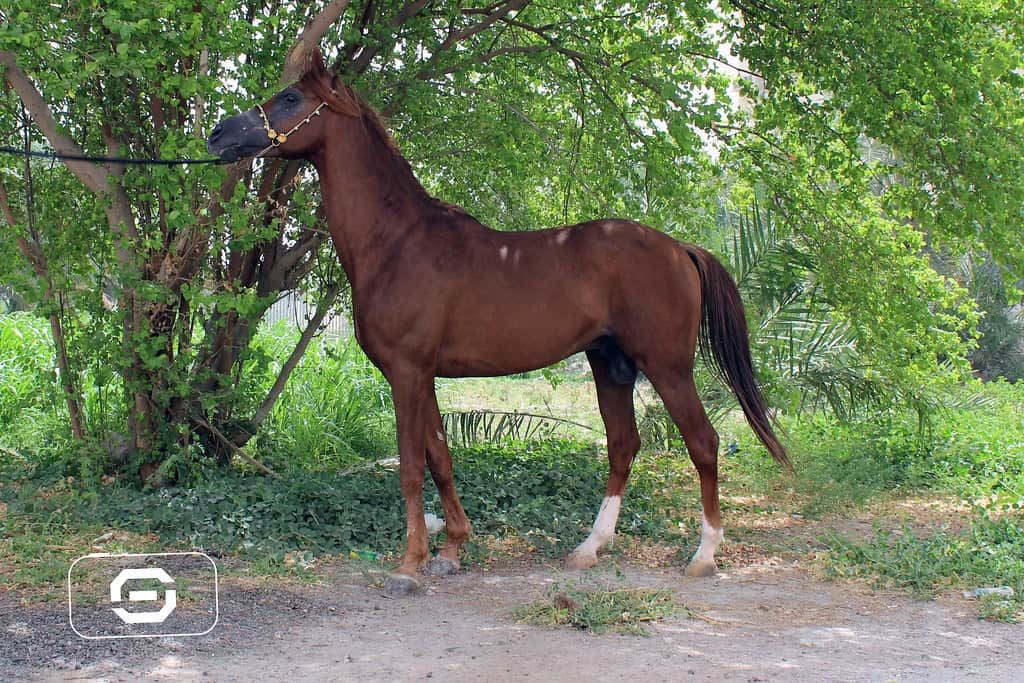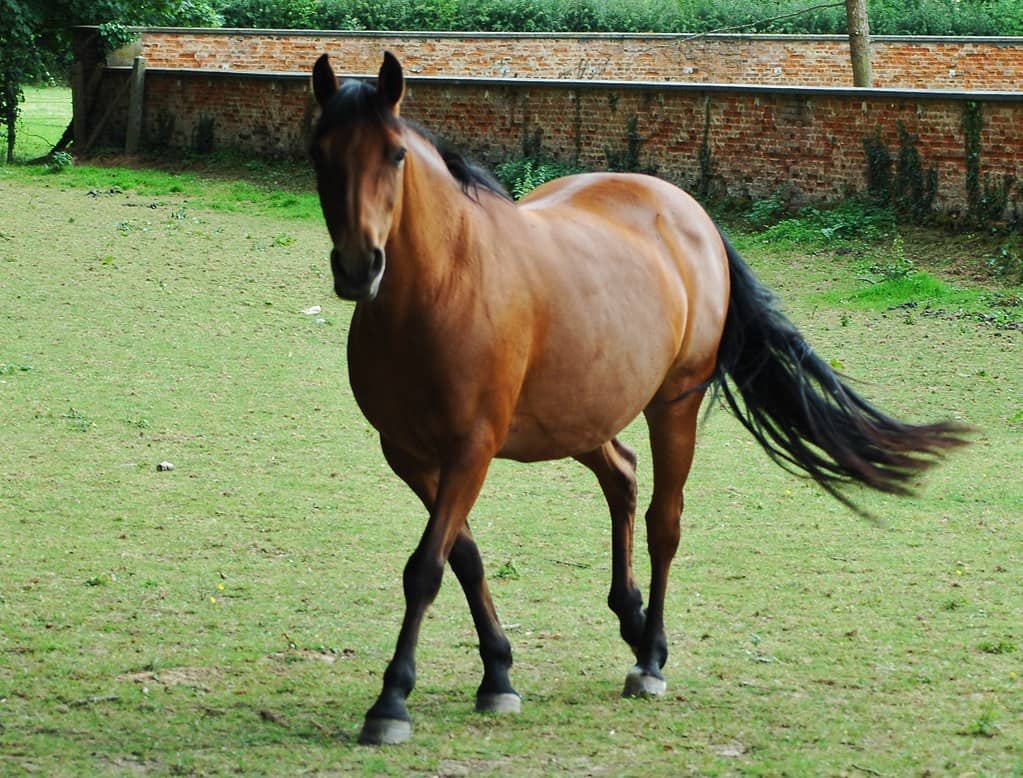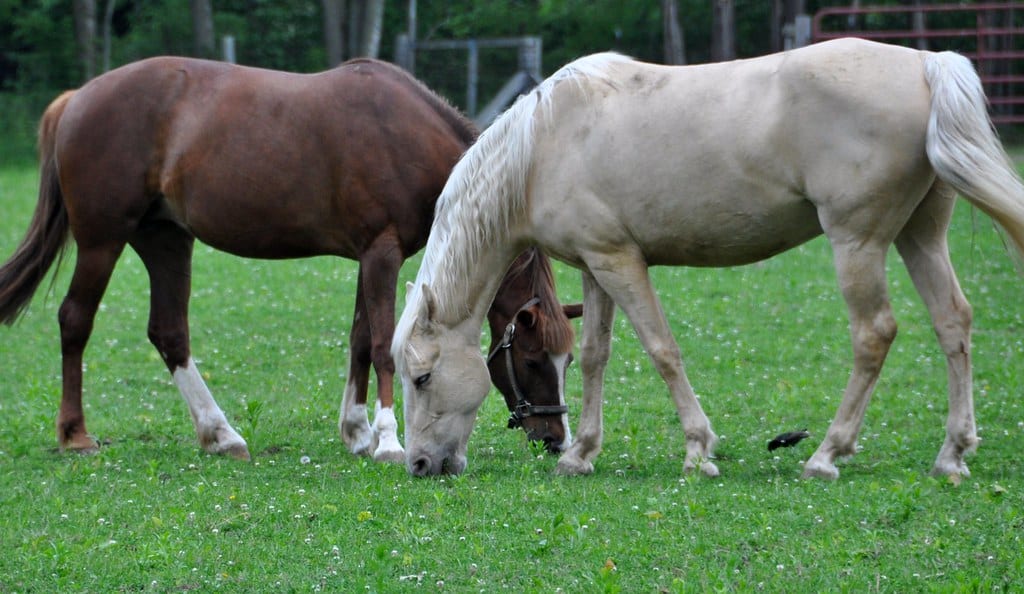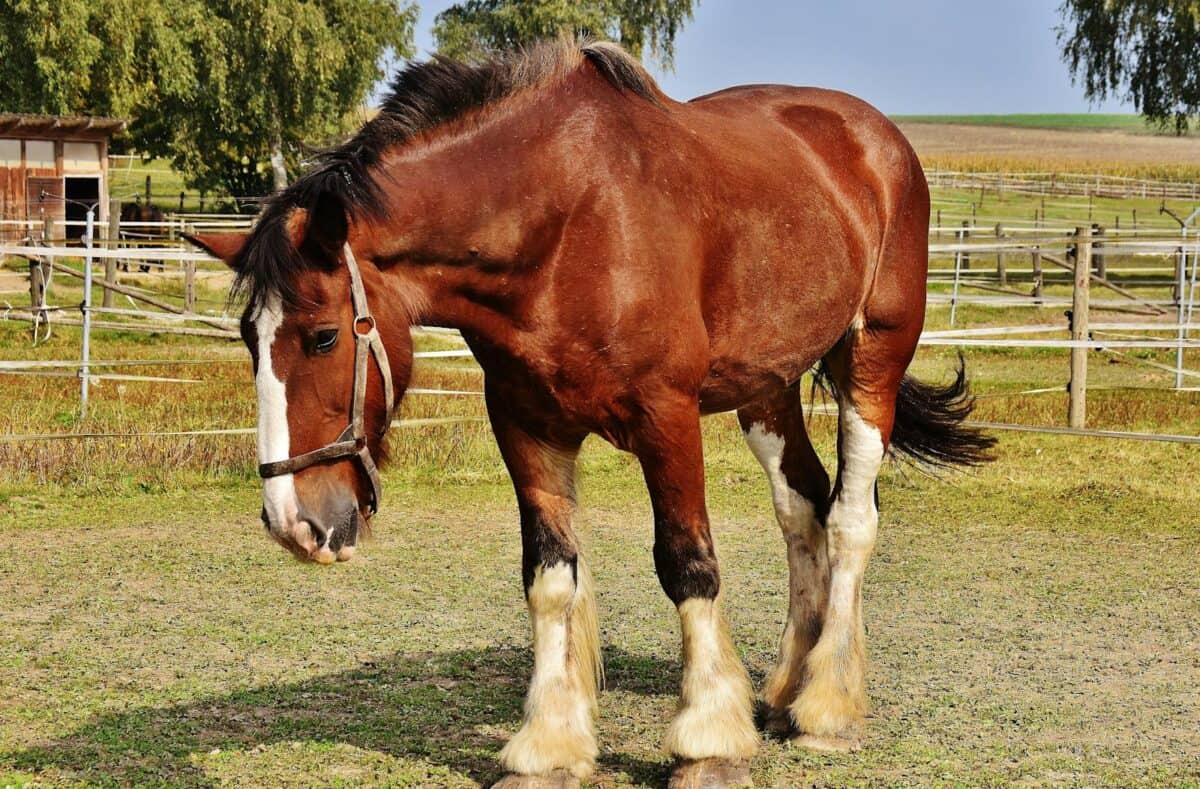Have you ever wondered what the world looks like through a horse’s eyes? These magnificent creatures see our shared environment in ways that would absolutely blow your mind. Their vision is so dramatically different from ours that understanding it feels like unlocking a secret code to animal behavior. From spotting predators in the wild to navigating complex show jumping courses, horses rely on their unique visual abilities in ways that continue to surprise researchers and horse lovers alike.
Horses Have Nearly 360-Degree Vision

Imagine being able to see almost everything around you without turning your head – that’s exactly what horses can do. Their eyes are positioned on the sides of their heads, giving them an incredible field of vision that spans nearly 360 degrees. This panoramic view means they can simultaneously watch for predators approaching from behind while keeping an eye on what’s happening in front of them. However, this amazing ability comes with a trade-off: horses have two significant blind spots directly in front of their nose and directly behind their tail. This explains why horses sometimes seem startled when you approach them head-on or from directly behind.
They See the World in Dichromatic Colors

While humans enjoy the full spectrum of colors thanks to our three types of color receptors, horses see the world quite differently. They have dichromatic vision, similar to humans with red-green color blindness, meaning they primarily see blues and yellows. This doesn’t mean their world is dull – imagine a sunset painted only in brilliant blues and golden yellows instead of the reds and oranges we see. Research shows that horses struggle to distinguish between red and green, which is why many equestrian facilities use blue and yellow for important visual cues. Their color perception is perfectly adapted for their needs as prey animals, helping them spot movement and changes in their environment more effectively than distinguishing between subtle color variations.
Their Eyes Move Independently Like Chameleons

One of the most fascinating aspects of horse vision is their ability to move each eye independently, much like chameleons do. This incredible skill allows them to focus one eye on grazing while the other scans the horizon for potential threats. Picture trying to read a book with one eye while watching TV with the other – that’s essentially what horses do naturally every day. This independent eye movement is crucial for their survival instincts, as it maximizes their ability to process visual information from multiple sources simultaneously. When you see a horse with one ear forward and one back, chances are their eyes are doing something similar, creating a complete sensory picture of their surroundings.
Horses Have Excellent Night Vision

When darkness falls, horses don’t retreat to their stalls worried about bumping into things – they’re actually well-equipped for nighttime adventures. Their eyes contain a reflective layer called the tapetum lucidum, the same structure that makes cats’ eyes shine in the dark. This biological feature acts like a mirror, reflecting light back through the retina and giving photoreceptors a second chance to capture available light. Think of it as nature’s built-in night vision goggles that make horses significantly better at seeing in low-light conditions than humans. However, their eyes need time to adjust when moving between bright and dark environments, just like ours do, but their adjustment period is often longer due to the size of their pupils.
They Can’t Focus on Objects the Same Way Humans Do

Unlike humans who can quickly adjust the shape of their eye’s lens to focus on objects at different distances, horses have a much more limited focusing ability. Instead of changing their lens shape dramatically, horses rely on moving their heads up and down to bring objects into focus using different parts of their retina. When you see a horse lift its head high to look at something in the distance, or lower it to examine something close up, they’re essentially using their head like a camera’s focus ring. This explains why horses sometimes seem to “look down their nose” at things – they’re literally positioning objects in their optimal viewing zone. Their retina has areas of varying visual acuity, so head position becomes crucial for getting the clearest possible image.
Motion Detection Is Their Superpower

If horses had superhero abilities, detecting motion would definitely be their signature power. Their visual system is incredibly sensitive to movement, allowing them to spot the slightest change in their environment that might signal danger. A plastic bag fluttering in the wind, a bird taking flight, or even leaves rustling can immediately capture a horse’s attention in ways that might seem excessive to us. This hypersensitivity to motion served them well as prey animals in the wild, where the difference between noticing a predator’s movement and missing it could mean life or death. Modern horses retain this ancient survival mechanism, which explains why they might spook at seemingly harmless moving objects that we barely notice.
Horses Have Poor Depth Perception Up Close

While horses excel at spotting distant movement and navigating open spaces, their depth perception becomes surprisingly poor when objects are very close to them. This limitation is due to the positioning of their eyes and the relatively small area where their visual fields overlap to create binocular vision. When loading into a trailer or stepping over obstacles, horses often rely more on their other senses and past experience than on their vision alone. This is why patient, consistent training is so important when teaching horses to navigate close-quarters situations. Smart horse handlers know to give their horses time to use their other senses – like smell and touch – to supplement what their eyes can’t clearly discern at close range.
They Can See Some Ultraviolet Light

Recent research has revealed that horses can see into the ultraviolet spectrum, opening up a whole dimension of their world that remains invisible to human eyes. This ability means that flowers, markings, and patterns that appear uniform to us might display striking ultraviolet patterns that horses can clearly see. Think about how different our world would look if we could suddenly see ultraviolet light – certain white objects might appear to have bold patterns, and the landscape itself might reveal hidden details. This UV vision likely helps horses in various ways, from identifying different types of vegetation to recognizing other horses, as many animals have UV-reflective markings that serve as natural identification systems.
Their Peripheral Vision Is Incredibly Sharp

While humans have sharp central vision and progressively blurrier peripheral vision, horses have developed remarkably acute peripheral vision that would make any prey animal jealous. They can detect fine details and movement in their side vision that would escape our notice entirely, even when we’re looking directly at the same area. This evolutionary adaptation means that horses can graze peacefully while maintaining excellent surveillance of their surroundings through their peripheral vision. It’s like having multiple high-definition security cameras running simultaneously, each capturing different angles and details of the environment. This explains why horses sometimes react to things we didn’t even realize were there – they’re processing visual information from angles we simply can’t match.
Eye Size Affects Their Visual Abilities

Horses have some of the largest eyes of any land mammal, and size definitely matters when it comes to their visual capabilities. These large eyes can gather more light and provide better resolution, similar to how a larger camera sensor typically produces better image quality. The size of their eyes also contributes to their excellent night vision and their ability to detect subtle movements across their expansive field of view. Interestingly, the size and shape of a horse’s eye can vary between breeds, with some having slightly different visual capabilities as a result. Think of it like different camera models – they all take pictures, but some are better suited for specific conditions or purposes than others.
Conclusion

Understanding how horses see the world gives us incredible insight into their behavior, fears, and natural abilities. Their vision system is perfectly designed for their role as prey animals, combining wide-angle surveillance with motion detection capabilities that far exceed our own. Next time you’re with a horse, remember that they’re experiencing a completely different visual reality – one filled with ultraviolet patterns, panoramic views, and motion details that remain invisible to us. This knowledge not only deepens our appreciation for these remarkable animals but also helps us become better partners in our relationship with them. Isn’t it amazing how much more connected we can feel to horses once we truly understand how they experience the world around them?
- 14 Creatures That Can Freeze and Thaw Back to Life - August 9, 2025
- 10 Animals That Risked Their Lives to Save Humans - August 9, 2025
- 14 Reasons Why Bears Are Afraid of Humans (Most of the Time) - August 9, 2025

